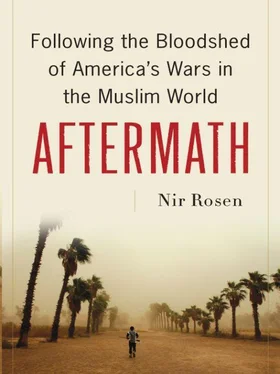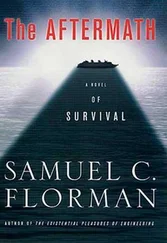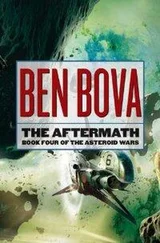McGurk and O’Sullivan challenged Abizaid’s assumptions. They saw that in battles during 2005, in the mid-Euphrates, in Al Qaim, Tal Afar, Heet, Haditha, and elsewhere, whenever the U.S. military stayed, the population turned against the insurgency and became cooperative. The Marines told them that mayors of towns had asked them not to leave. The pair were also skeptical that the Iraqi Security Forces could handle the levels of violence in Iraq, and proved that they couldn’t. The Interior Ministry was mistrusted, and the Iraqi army was at risk of fracturing or disbanding, as it had in 2004, when the Americans had to restart it.
In the spring of 2006 President Bush gave a speech highlighting Nineveh province’s Tal Afar to show that American strategy was working, but Tal Afar—where the Third Armored Cavalry Regiment had cleared, held, and built—was not part of the American strategy; it was an exception. McGurk and O’Sullivan were cynical that political reconciliation could end violence. People on the street were not fighting each other because the Iraqi Parliament could not agree on an oil law, they argued. They felt they could show empirically that more U.S. forces, with a different strategy, could stabilize the country and lead to security. They spoke to old Iraq hands at the CIA and saw that the agency’s findings supported their position. To them a troop surge was not intended to open a space for political reconciliation; it was about building up the Iraqi Security Forces so they could hold the line and allow politics to take its course. Although many CIA analysts thought a surge would be throwing good money after bad, and was coming too late to be effective, McGurk and O’Sullivan were zealous about the need for more troops.
By the end of the summer of 2006, Bush was finally focused on changing course in Iraq. He no longer trusted Casey and Abizaid, and he wouldn’t defer to the generals anymore. Although Bush was briefed every morning by a CIA official about events around the world, he asked for a special briefing by the CIA every Monday only on Iraq. But he didn’t want his regular briefer from the agency; he wanted a young analyst. It was unusual for a young analyst to have that kind of access to the president. A typical analyst was a geek in an argyle sweater who was terrified by the idea of briefing the president, especially since an analyst might approach Iraq as an intellectual challenge, while Bush often flaunted his anti-intellectual credentials. When he was briefed about how the Mahdi Army was providing services to its supporters and beginning to resemble Lebanese Hizballah in its early stages, Bush was not curious and did not inquire how and why. Instead he asked, Should we kill Sadr? And what do we do to stop it? But Bush was also beginning to understand Iraqi political dynamics. He talked to Maliki regularly, one on one, through a translator. He gave Maliki advice. Bush wanted to build a special relationship with Maliki, as one leader to another leader. Others in the administration said he should not engage so frequently because he would lose leverage.
In November 2006 Bush met with Maliki in Amman. He told Maliki he would send more troops to stabilize Baghdad, but he needed his Iraqi counterpart’s support. U.S. military leaders were skeptical of Maliki. They said he was sectarian and knew what was going on in the streets. But McGurk sympathized with his position; he knew Maliki would lose if he took on the Mahdi Army. Maliki wanted to work Shiite politics and weaken the Shiite militia before taking them on. The Iraqi prime minister gave Bush his commitment.
EVEN THOUGH THE SURGE was controversial at its inception, its success would become something of a proverbial truth, and the proponents of the new counterinsurgency strategy—known by its acronym, COIN—would soon become very influential over the American defense establishment. Gen. David Petraeus, with whom the surge would become identified, had spent the course of 2006 reshaping how the U.S. military thought about counterinsurgency. He effectively had a yearlong graduate course in COIN while based at the U.S. Army Combined Arms Center (USACAC) at Fort Leavenworth, Kansas, where he served as commanding general. There, along with Conrad Crane, John Nagl, Marine Gen. James Mattis, and others, he wrote the U.S. military’s manual on COIN. According to the manual, called FM 3-24, the purpose was to “relearn the principles of counterinsurgency,” create better learning organizations in the military, and change the Army and Marine Corps. It was not just about winning Iraq and Afghanistan; it was written “to help Army and Marine Corps leaders to conduct COIN operations anywhere in the world ” [emphasis added].
Some in the CIA and the National Security Agency were wary when Petraeus was appointed to run the war in Iraq. In 2004 he had been in charge of training the Iraqi Security Forces. The Iraqi army had performed poorly in the battles of Najaf and Falluja, even though Petraeus was still briefing the U.S. government about how great the Iraqi Security Forces were. Battalion-level commanders were complaining that 80 percent of the Iraqi army were absent without leave and that the ones who did show were incompetent. Petraeus was considered a liar by these figures within the CIA and NSA—typical military, refusing to admit there was a problem. But Petraeus could be candid among his fellow military officers, so it was likely that in his briefing to civilians he was constrained by Rumsfeld’s worldview, which obstinately refused to see the reality of disaster in Iraq.
Petraeus was not one to publicly undermine policy. He would be hailed as a “warrior scholar,” but in 2004 he was still part of the “stay the course” school. In fact, in 2004 he wrote an optimistic op-ed in the Washington Post about the war in Iraq, which was perceived to be entering the political debate during an election year, something usually taboo for someone so high in the chain of command. In the op-ed, titled “Battling for Iraq,” he listed the numbers of recruits and graduates from the Iraqi Security Forces. “I see tangible progress,” he wrote. “Iraqi security elements are being rebuilt from the ground up. . . . Iraqi leaders are stepping forward, leading their country and their security forces courageously.” Though he admitted there were setbacks, he insisted there were “reasons for optimism.” “Iraq’s security forces are, however, developing steadily and they are in the fight. Momentum has gathered in recent months. With strong Iraqi leaders out front and with continued coalition—and now NATO—support, this trend will continue. It will not be easy, but few worthwhile things are.”
Perhaps a clue to Petraeus’s real thinking is the fact that by the end of 2005 he was back in the United States working on the new counterinsurgency manual, which turned out to be a scathing critique of how the military had been fighting the war in Iraq. Similarly, between 2003 and 2004, he had opposed Bremer’s de-Baathification, dismissal of the Iraqi army, and free-market reforms in Iraq. He e-mailed his men, telling them to ignore Bremer, basically urging insubordination. Petraeus wanted to provide stability in Iraq and knew Bremer was destabilizing the country.
Petraeus was a masterful bureaucrat. He took an Army that was focused on fighting a conventional war—whose standard practice, in the words of a State Department official I spoke to, was to place their boots on the heads of Iraqi men they were detaining—and got it to “turn on a dime to fight an insurgency.” Petraeus would become the most influential U.S. general since George C. Marshall. The surge would also be seen as a panacea to U.S. problems in Afghanistan. The story I tell in the next chapters is more complicated than both Petraeus’s hagiographers and critics claim.
Читать дальше











